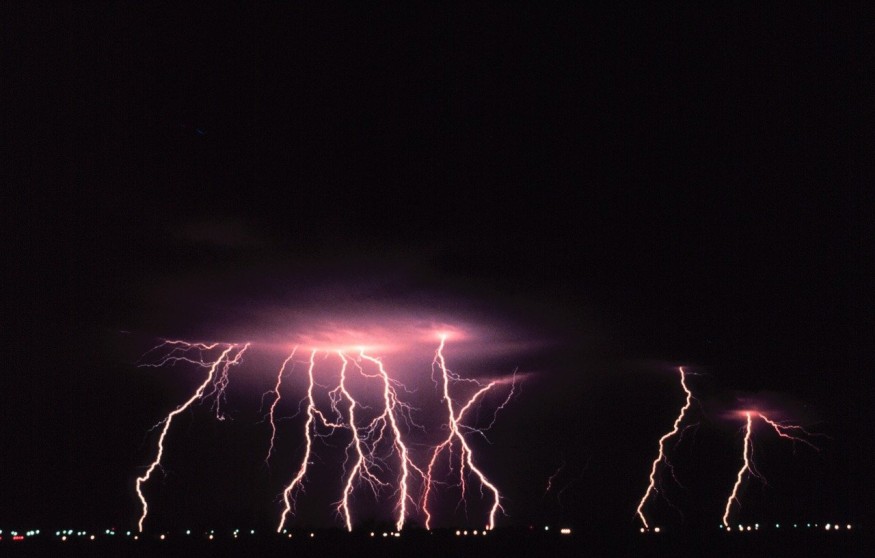The United Kingdom is currently experiencing a record-breaking heatwave that affects not only people but also plants, particularly turning gardens brown from their usual healthy colors. But Met Office revealed that the upcoming thunderstorms coupled with lightning could help plants to grow.
Lightning and the water from thunderstorms' rain can make plants healthy again by providing them with the nutrients they need. Met Office forecasted thunderstorms in Wales, South West England, and Central Southern England on Friday when slow-moving heavy showers will happen.

Thunderstorms After a Series of Heatwave
Met Office said thunderstorms are common after hot weather because of the unstable atmosphere. The country's meteorological agency explained that the ground is very warm and colder air moves on top of it during this time.
A Met Office spokesperson told MailOnline that the colder air on top of warmer air near the surface creates an unstable atmosphere, wherein air rises rapidly and cools then creates big towering thunder clouds known as cumulonimbus. It eventually forms hail as droplets become too heavy to be supported upward.
As hail moves with the cloud, it catches negative charges and smaller positive charges as it rubs with ice crystals. Met Office explains that the negative charge forms at the base of the cloud, while the positive charge is formed at the top of the cloud. As the attraction becomes stronger, the positive and negative charges meet and cause a flash of lightning, sometimes known as a lightning bolt.
Heatwaves Causing Browning of British Gardens
Britain experienced a record-breaking heatwave this weak that reached 104.5F (40.3C), causing traditional gardens to wither and turn brown. Leigh Hunt, the principal adviser to the Royal Horticultural Society (RHS), has said that these heatwaves could signal the end of traditional British gardens and become the catalyst for change.
Gardeners have tried planting more sun-loving, drought-tolerant plants for many years in gardens, but this year's summer and its damage are very much unexpected. It caused damage to some favorites that might lead to gardeners using plants that can survive extremely wet and dry weather, changing traditional British gardens.
How Lightning Strikes Could Help Plants Grow
Although lightning strikes can destroy trees, Met Office explains that it can help plants grow. When lightning hits the tree, it travels below the bark where the sap and water are located, instantly heating and expanding them.
Plants rely on nitrogen for important processes, like photosynthesis. According to Top Crop Manager, Earth's atmosphere is made up of about 78% nitrogen that plants can absorb. Lighting could help fix nitrogen deficiency in plants as it causes nitrogen to bond with oxygen to create nitrogen oxide. Combined with the moisture in the air, it falls to plants as nitrate-rich water.
Dr. John Lauzon, an assistant professor in the Land Resource Science department at the University of Guelph in Canada, said that the interesting facet of this process is the impact of lightning and its use on plants as it makes nitrogen available that would not have been available before.
Check out more news and information on Earth Science in Science Times.
© 2025 ScienceTimes.com All rights reserved. Do not reproduce without permission. The window to the world of Science Times.












